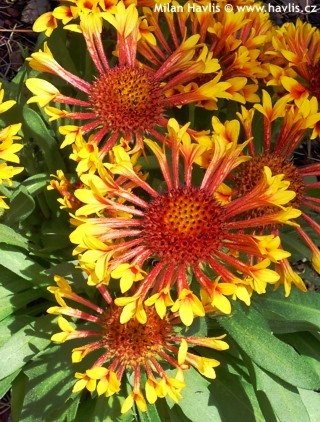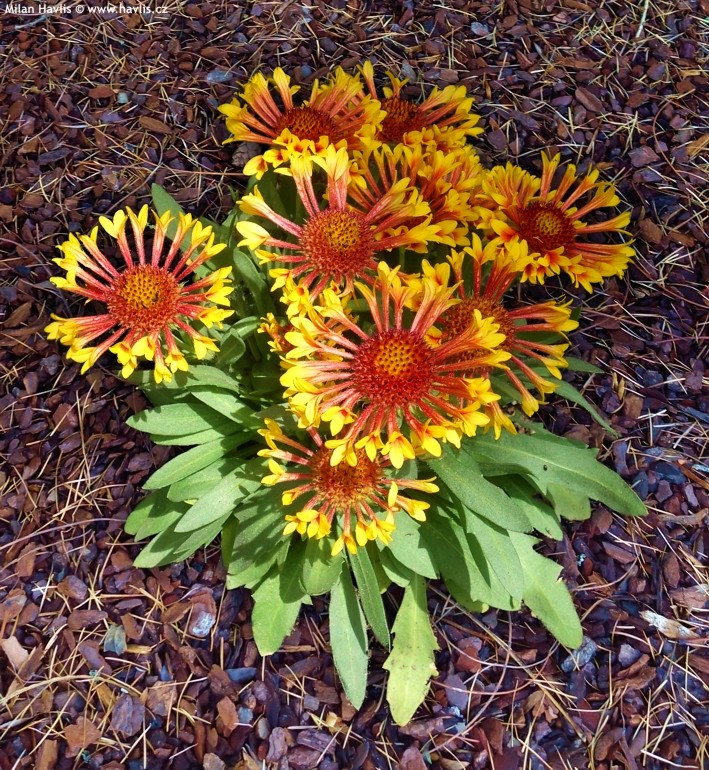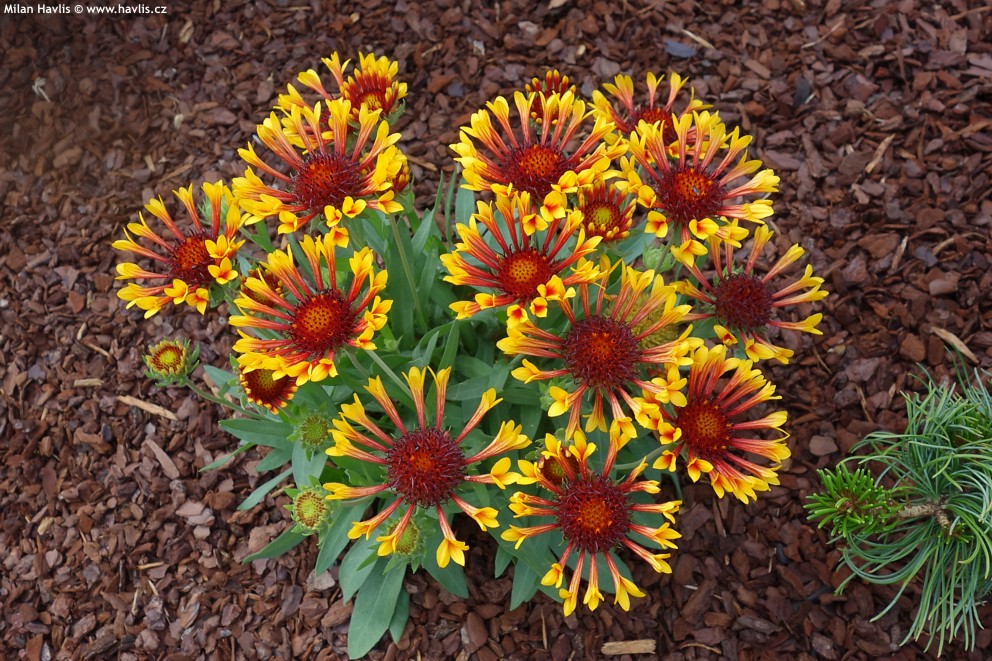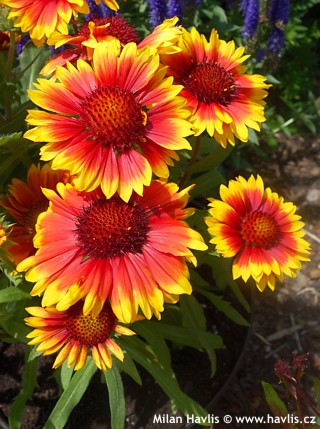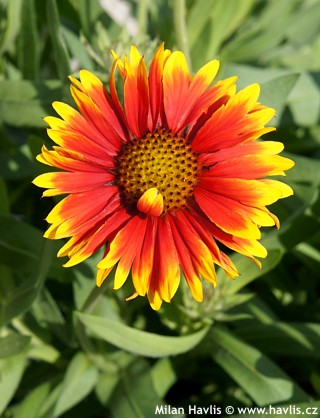Gaillardia 'FANFARE' blanket flower
size/type
low perennial,low perennial
usual height
0,1-0,2m
usual width
0,3-0,4m
leaves
semi-deciduous broadleaf
colour of leaves
flowers
showy
colour of flowers
blooming time
June-October
location
full sun
USDA zone (lowest)
3 (down to -40°C)
winter protection
for zone 5+6

for zone 7

categorized
Gaillardia
If there is a perennial heaven, there must be plenty of blanket flowers. This is such a beautiful plant that should not be missing in any bed where bright colours and summer flowering are key features. G.aristata is one of the most common species. Its original habitat ranges from Canada - west of Rocky Mountains - down to Arizona in the USA. G.x grandiflora is an accepted name for possibly the largest group of garden crosses, hybrids of g.aristata and g.pulchella, yet many others and especially more recent ones are natural mutations of untraceable origin.Description of the plant:
Fanfare is a unique blanket flower which was first discovered by an English botanist Richard Read in 1997. It is a seedling mutation probably of gaillardia Goblin. Fanfare produces large, daisy-like flowers with tubular ray florets where the tube is dark red and the bell is golden yellow and divided into several acute lobes. They appear from about mid June and continue blooming restlessly until October if early autumn is sunny and warm. The stems are hairy and short which helps maintain a compact, mounding habit and form a dense, extremely free flowering cushion. Deciduous, somewhat hairy leaves are pale green. Blanket flowers need full sun and well-drained soil that does not remain wet especially in winter. They can take long periods without rain and withstand significant drought once established. Blanket flowers are categorized as short-lived perennials, however, they can dwell in one location for a good number of years if they like the spot - if the soil is free-draining and not overfertilized which is in case of blanket flower absolutely useless. Too much fertilizing speeds up maturation and aging of the plant which leads to quick death. Under good conditions the plants are much hardier than expected and can allegedly withstand even -40°C (USDA 3).
Last update 06-12-2017
QUICK PRICE OVERVIEW
CURRENTLY SOLD OUT
WANT TO TRY A SIMILAR PLANT?












